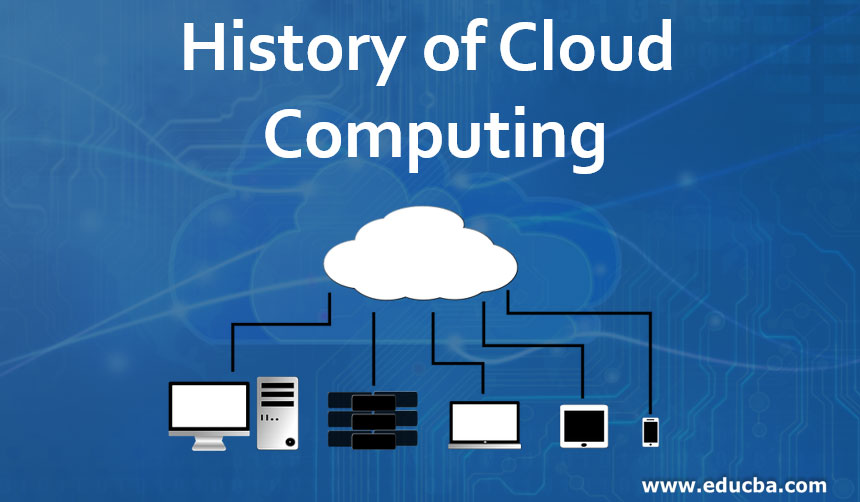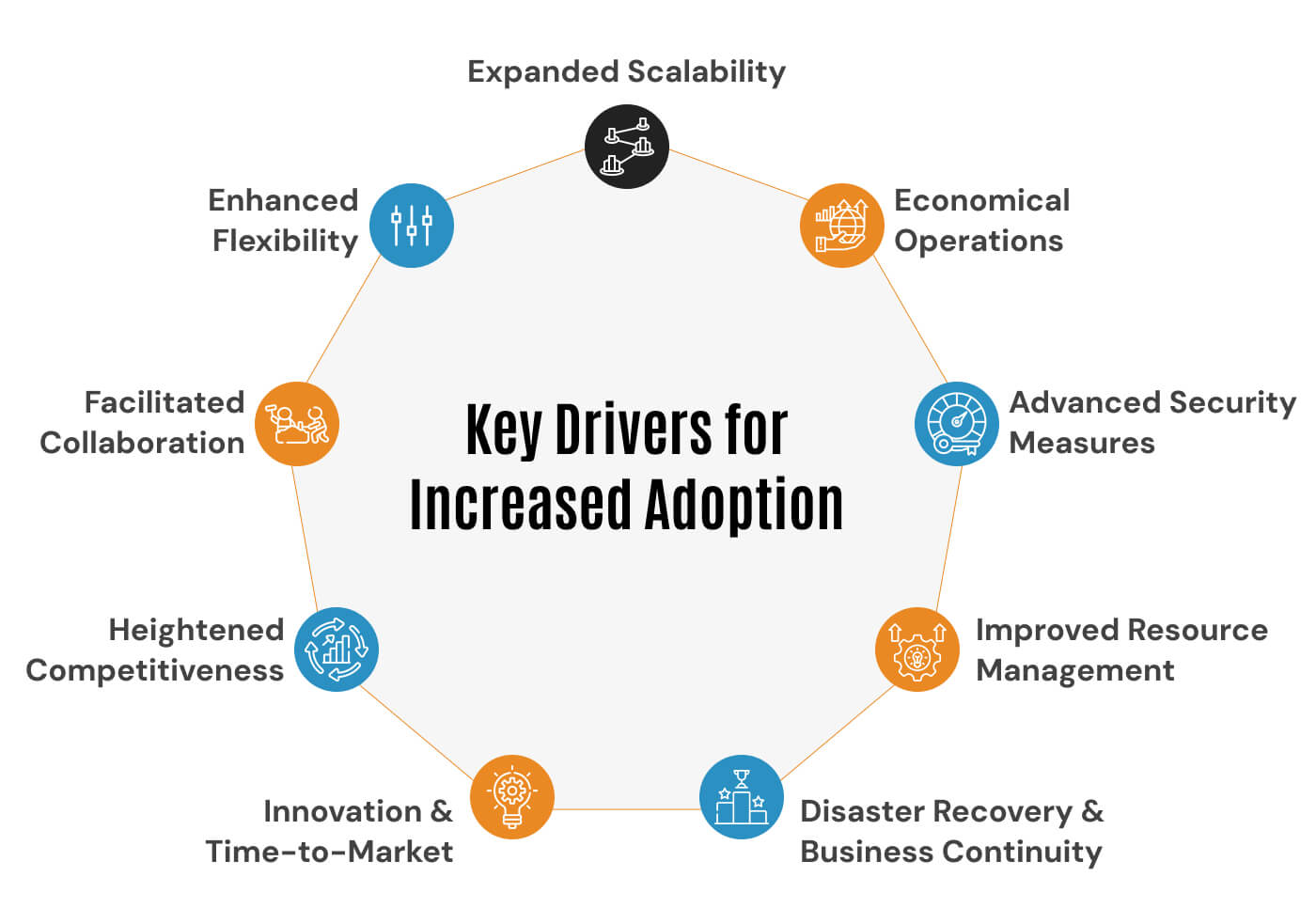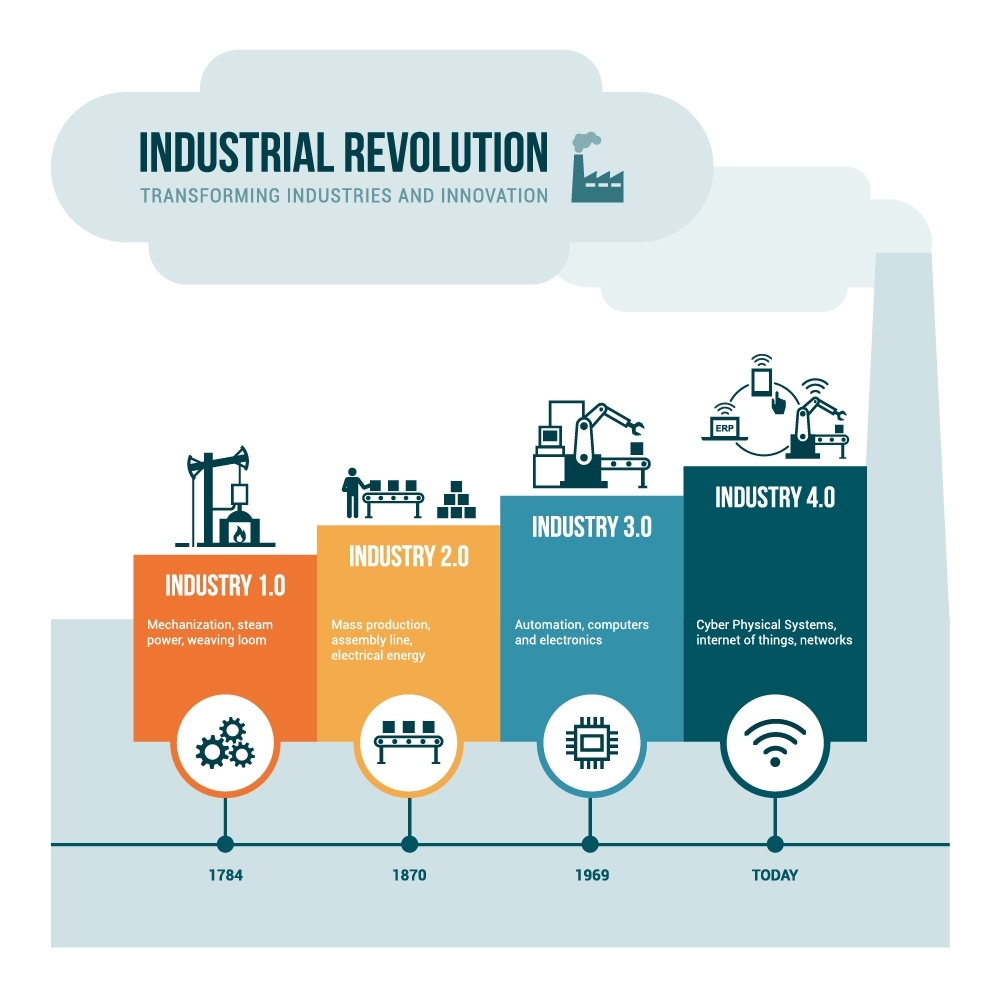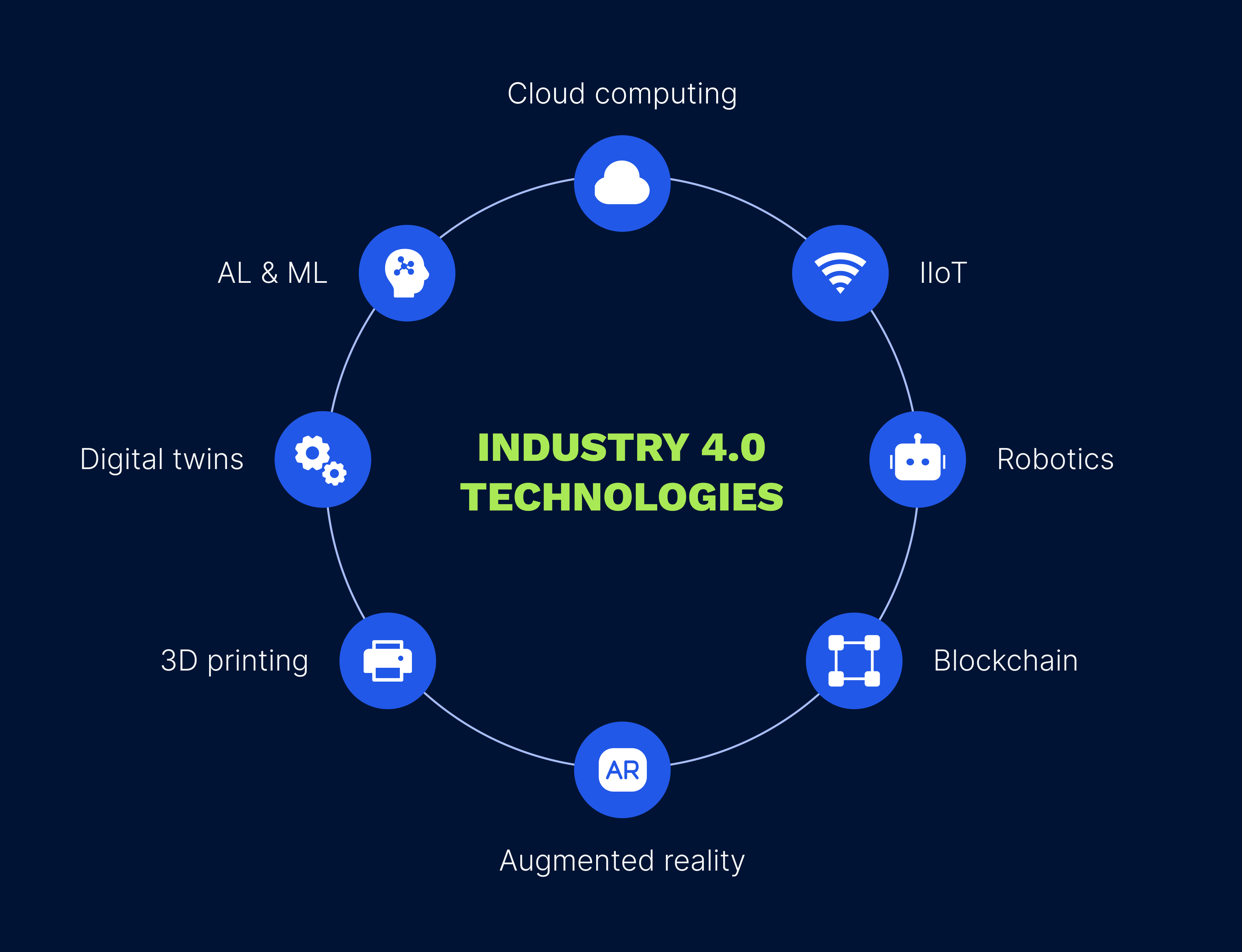
Introduction
Overview of Cloud Computing Revolution
The digital age has witnessed the rise of cloud computing as a transformative force across various sectors, reshaping how businesses operate and interact with their customers. This revolution enables companies of all sizes to access computing resources over the internet, thereby enhancing efficiency and enabling scalability without the hefty investment in physical infrastructure.
Imagine a startup developing a niche app. With cloud computing, they can leverage platforms like Amazon Web Services or Google Cloud to host their application seamlessly. This accessibility allows them to innovate rapidly without being hindered by the limitations of traditional server setups.
The benefits of cloud computing are manifold, including:
- Cost Efficiency: No need for extensive hardware investments; businesses pay for what they use.
- Scalability: Easily adapt resources based on demand fluctuations, perfect for seasonal businesses.
- Collaboration: Teams can access data and applications from anywhere, promoting remote work and efficient collaboration.
Significance of Industries Leading the Revolution
As we delve deeper into this cloud computing revolution, it’s crucial to spotlight the industries that are at the forefront of this transformation. Key sectors like information technology, healthcare, finance, education, and retail are harnessing cloud technology to drive innovation.
For instance, many IT companies are moving away from traditional software development environments to adopt cloud-based solutions, streamlining workflows and allowing for real-time updates and collaboration. Likewise, healthcare organizations are integrating cloud systems to manage electronic health records, enhancing patient care and operational efficiency.
As we explore each industry in the subsequent sections, it will become evident that the integration of cloud computing is not merely a trend; it is a strategic necessity in a fast-evolving digital landscape. This shift not only boosts productivity but also fosters an environment of continuous improvement and innovation, shaping the future trajectories of entire sectors.

Information Technology Sector
Cloud Computing in Software Development
The information technology sector has been one of the most prominent adopters of cloud computing, revolutionizing the way software is developed and deployed. By leveraging cloud platforms, developers can streamline the entire software development lifecycle, from coding to testing and deployment.
Consider a software team working on a new application. In the past, their workflow involved installing and configuring various software tools on local machines, often leading to delays and compatibility issues. With cloud computing, teams can access a suite of development tools integrated into a single platform. Tools like GitHub, Bitbucket, and various cloud IDEs simplify collaboration and version control.
Key advantages of cloud computing in software development include:
- Faster Development Cycles: Teams can deploy applications in days rather than weeks or months.
- Real-time Collaboration: Developers can work simultaneously from different locations without the hassle of syncing versions.
- Access to Resources: Instantly scale computing resources according to project demands, reducing downtime and wait times.
Adoption of Cloud Solutions in IT Companies
As the benefits of cloud computing have become increasingly apparent, more IT companies are migrating their operations to the cloud. This shift not only optimizes productivity but also fosters innovation. For example, major companies like Netflix and Spotify have completely embraced cloud solutions to deliver seamless user experiences.
The following trends highlight the adoption of cloud solutions within IT companies:
- Infrastructure as a Service (IaaS): Companies are shifting infrastructure management to cloud providers, minimizing hardware maintenance costs.
- Platform as a Service (PaaS): Developers use PaaS offerings to publish applications without worrying about underlying infrastructure.
- Enhanced Security Measures: Cloud providers often offer robust security features that help protect sensitive data, allowing IT companies to focus on core business activities rather than managing security protocols.
The adoption of cloud solutions in the IT sector signifies a transformative shift toward more agile, efficient, and scalable development practices. As we transition to explore other industries, the impact of cloud computing on the software development landscape becomes increasingly evident, solidifying its role as a crucial enabler of modern technological innovation.

Healthcare Industry
Utilization of Cloud Technology in Electronic Health Records
The healthcare industry is undergoing a significant transformation, with cloud technology playing a pivotal role in managing Electronic Health Records (EHRs). Traditional EHR systems often faced challenges like data silos and limited accessibility, which hindered the quality and speed of patient care. However, cloud computing has revolutionized how healthcare providers store, access, and manage patient information.
Imagine a busy hospital where doctors and nurses need instantaneous access to patient records. With cloud-based EHRs, medical professionals can securely access comprehensive patient histories, lab results, and medication lists from any device with internet connectivity. This accessibility not only enhances collaboration among healthcare teams but also ensures that critical information is available during emergencies, leading to more informed decision-making.
Some key features of cloud technology in EHR management include:
- Real-time Updates: Patient records are updated in real time, ensuring that every member of the healthcare team has immediate access to the latest information.
- Interoperability: Cloud systems allow for better integration among various healthcare providers, enabling more coordinated patient care.
- Scalability: As patient data grows, cloud solutions can easily expand storage capacity without the need for extensive hardware investments.
Benefits of Cloud Computing in Health Systems
The integration of cloud computing in health systems goes beyond just EHR management—it offers a plethora of benefits that enhance overall healthcare delivery. For instance, hospitals that adopt cloud solutions often report improved operational efficiency and cost savings.
Here are some of the main benefits of cloud computing in healthcare:
- Cost-Effectiveness: By minimizing the need for physical infrastructure, healthcare organizations can redirect resources toward patient care initiatives.
- Enhanced Security: Cloud providers implement stringent security protocols to protect sensitive health data, reducing the risk of data breaches.
- Better Patient Engagement: Cloud-based platforms allow patients to access their medical records, schedule appointments, and communicate with providers, fostering a more engaged patient population.
The transition of healthcare systems to cloud-based models signifies a crucial shift toward enhanced patient care, operational efficiency, and data security. As we explore further industries utilizing cloud technology, the healthcare sector stands as a compelling example of how innovation can improve lives and streamline processes.

Financial Services Sector
Cloud Computing in Banking Systems
The financial services sector is experiencing a seismic shift as cloud computing becomes integral to banking systems. Traditionally, banks operated on rigid infrastructures that required significant investments and lengthy upgrade cycles. However, with the advent of cloud technology, financial institutions are embracing models that enhance flexibility, scalability, and efficiency.
Imagine visiting your bank and realizing you can complete transactions in a fraction of the time it used to take. This convenience stems from cloud computing, which optimizes back-office operations, ensuring faster transaction processing and improved customer service. Banks can now swiftly adapt to market changes, roll out new services, and manage vast amounts of data with ease.
Key benefits of cloud computing in banking include:
- Operational Efficiency: By leveraging cloud infrastructure, banks can streamline operations, reducing costs associated with legacy systems.
- Enhanced Security: Cloud providers often offer state-of-the-art security protocols, ensuring that sensitive financial data is protected against evolving threats.
- Improved Customer Experience: With data analytics capabilities in the cloud, banks can offer personalized products and services tailored to customer preferences.
Fintech Companies Harnessing Cloud Technology
As the landscape of the financial industry evolves, fintech companies are at the forefront of utilizing cloud technology to disrupt traditional banking models. These agile startups leverage cloud capabilities to provide innovative financial solutions quickly and efficiently.
For example, companies like Square and Stripe have revolutionized payment processing by offering cloud-based platforms that allow businesses to accept payments seamlessly, whether online or in-store. The advantages they experience include:
- Rapid Deployment: Fintech companies can launch products much faster, enabling them to seize opportunities in a competitive market.
- Cost-Effectiveness: By using cloud infrastructure, these companies minimize overhead costs, allowing them to pass on savings to consumers.
- Data-Driven Insights: Access to refined data analytics enables fintech firms to adapt to user behavior, enhancing product offerings and customer engagement.
The financial services sector’s embrace of cloud technology reveals its profound impact on banking and fintech. As we navigate through the evolving landscape, it is clear that cloud computing not only fosters innovation but also lays the groundwork for a more agile and customer-centric financial ecosystem.

Education Sector
Cloud-based Learning Platforms
Cloud computing is making waves in the education sector, particularly through the development of cloud-based learning platforms. These platforms have transformed traditional classroom settings into dynamic, interactive learning environments that cater to the diverse needs of students and educators alike.
Picture a classroom where students can access learning materials from anywhere, at any time, using devices they already own. Services like Google Classroom, Canvas, and Microsoft Teams have become staples for educators seeking to create engaging, accessible learning experiences.
The benefits of cloud-based learning platforms include:
- Flexibility and Accessibility: Students can learn at their own pace, accessing resources on-demand from any device.
- Collaborative Learning: With cloud tools, students and teachers can work together on projects in real-time, regardless of their physical locations.
- Cost Savings: Institutions can significantly reduce costs associated with physical textbooks and other resources by offering digital alternatives.
Impact of Cloud Computing on Educational Institutions
The impact of cloud computing on educational institutions extends beyond just enhancing learning experiences; it also revolutionizes administrative processes. Schools and universities can streamline operations by utilizing cloud applications for activities like enrollment, grading, and attendance tracking.
For example, consider a university that previously relied on paper records. By switching to cloud-based systems, they can:
- Improve Data Management: Cloud technology allows for the safe storage and easy retrieval of important student information, ensuring compliance with regulations like FERPA.
- Enhance Communication: Cloud-based platforms facilitate better communication between faculty, students, and parents, fostering a more connected educational community.
- Encourage Innovation: With the resources saved on administrative overhead, institutions can focus on developing new programs and enhancing existing curricula to better prepare students for the future.
The integration of cloud technology in education has fundamentally changed how learning is delivered and managed. As we further explore the various industries adapting to this cloud computing revolution, it becomes evident that the education sector is poised not just for transformation but also for profound improvement in student engagement and outcomes.

Manufacturing and Retail Industries
Integration of Cloud Solutions in Supply Chain Management
The manufacturing and retail industries are undergoing a significant shift as cloud computing enables more sophisticated supply chain management solutions. With the complexities of global logistics and the need for real-time data sharing, manufacturers and retailers are increasingly turning to cloud technology to streamline their operations.
Imagine a manufacturing company that struggles with coordinating between suppliers, production schedules, and inventory management. By integrating cloud solutions, they can gain real-time visibility into their supply chain, allowing for better decision-making and faster responses to market changes.
Some key benefits of cloud integration in supply chain management include:
- Enhanced Collaboration: Cloud platforms break down silos, enabling all stakeholders—from suppliers to logistics providers—to collaborate effectively and share information seamlessly.
- Improved Inventory Management: Businesses can track inventory levels in real-time, reducing the risk of overstocking or stockouts, which can lead to lost sales or increased holding costs.
- Data-Driven Insights: Advanced analytics capabilities enable manufacturers to identify trends, forecast demand more accurately, and optimize their supply chain operations.
E-commerce Companies Leveraging Cloud Technology
As e-commerce continues to thrive, companies in this sector are heavily leveraging cloud technology to enhance their business models. From online storefronts to customer interaction, clouds have become indispensable for operational success.
For instance, consider an e-commerce retailer that utilizes cloud platforms for its website hosting, payment processing, and customer relationship management. The advantages they experience include:
- Scalability: E-commerce businesses can efficiently scale infrastructure to manage spikes in website traffic during sales events or the holiday season without compromising performance.
- Flexible Payment Solutions: With cloud technology, companies can offer various payment options to customers, making the purchasing process more convenient and user-friendly.
- Enhanced Security: Cloud providers implement robust security measures, helping e-commerce businesses protect sensitive customer data from cyber threats.
The integration of cloud technology in both manufacturing and retail not only enhances operational efficiency but also improves customer experiences. As we delve deeper into industries impacted by cloud computing, it is clear that these advancements not only foster growth among businesses but also reshape the overall market landscape, preparing it for a more innovative future.

Future Trends and Innovations
AI and IoT in Cloud Computing
As we look forward to the future, the convergence of Artificial Intelligence (AI) and the Internet of Things (IoT) within cloud computing is set to revolutionize industries. These technologies not only enhance the capabilities of cloud systems but also create new avenues for innovation and efficiency.
Consider a smart home equipped with various IoT devices, from thermostats to security cameras. When these devices are connected to the cloud, they can be managed and analyzed more effectively, providing users with actionable insights. This is where AI shines; it processes vast amounts of data generated by IoT devices, learning user patterns and preferences and enabling predictive analytics.
The advantages of integrating AI and IoT into cloud computing include:
- Enhanced Data Management: Cloud-based systems can store and analyze data from countless devices, improving decision-making processes.
- Automation: AI can automate routine tasks, such as inventory management in retail or predictive maintenance in manufacturing, leading to significant cost savings.
- Personalization: In sectors like healthcare, AI-driven insights can help tailor treatments based on individual patient data stored in the cloud, ensuring better outcomes.
Potential of Edge Computing in Various Industries
Alongside these advancements, edge computing is emerging as a game-changer in how data is processed and analyzed across various industries. By processing data closer to where it is generated—at the “edge” of the network—edge computing minimizes latency and enhances the performance of applications that depend on real-time data.
Imagine a manufacturing plant that uses smart sensors to monitor machinery. Instead of sending all data to a centralized cloud for analysis, edge computing allows for immediate processing at the machine level, enabling quicker adjustments that can prevent costly downtimes.
Key benefits of edge computing include:
- Reduced Latency: Real-time data processing is critical in industries like healthcare and autonomous vehicles, where delays can be detrimental.
- Increased Bandwidth Efficiency: By handling data locally, edge computing reduces the load on cloud networks, making it a more efficient solution for bandwidth-heavy applications.
- Enhanced Security: By processing sensitive data locally, companies can minimize exposure to potential breaches, offering added peace of mind.
As we delve into the future trends and innovations in cloud computing, it becomes evident that the integration of AI, IoT, and edge computing will not only transform operational efficiencies but also redefine the technological landscape in various industries. The cloud is paving the way for intelligent, connected ecosystems that promise to enhance both productivity and user experiences across the board.

Conclusion
Recap of Leading Industries in Cloud Computing
As we conclude our exploration of the cloud computing revolution, it’s essential to recap the key industries that are leading this transformative wave. From information technology to healthcare, finance, education, and manufacturing, various sectors have harnessed the power of cloud technology to enhance their operations and service delivery.
- Information Technology: Here, cloud computing has streamlined software development, enabling faster innovation and collaboration.
- Healthcare: Hospitals and clinics are using cloud-based EHR systems to improve patient care and data management.
- Financial Services: Banks and fintech companies are leveraging the cloud to enhance security, streamline transactions, and provide personalized services.
- Education: Cloud-based learning platforms have made education more flexible and accessible, allowing students to learn anytime, anywhere.
- Manufacturing and Retail: Integrating cloud solutions into supply chain management and e-commerce has boosted efficiency and customer satisfaction.
Each of these industries demonstrates the diverse applications of cloud technology, affirming its significance in today’s digital landscape.
Outlook on the Future of Cloud Revolution
Looking ahead, the future of cloud computing promises even greater advancements and innovations. With the accelerating development of AI, IoT, and edge computing, we can anticipate a more interconnected and efficient business environment.
The potential benefits of these trends include:
- Increased Automation: As AI integrates further into cloud services, businesses can expect heightened levels of automation, reducing operational costs and minimizing human error.
- More Personalized Experiences: The analysis of data from IoT devices can lead to solutions tailored specifically to user needs, enhancing customer satisfaction across industries.
- Stronger Security Protocols: With heightened focus on cybersecurity in cloud infrastructures, companies can operate with greater confidence, knowing that protections are in place.
In summary, as cloud computing continues to evolve, it will play a pivotal role in shaping the future of various industries. The cloud revolution is not just a trend; it is a fundamental shift that is redefining how businesses operate and engage with consumers. Embracing this change will be crucial for organizations aiming to succeed in an increasingly digital world.

